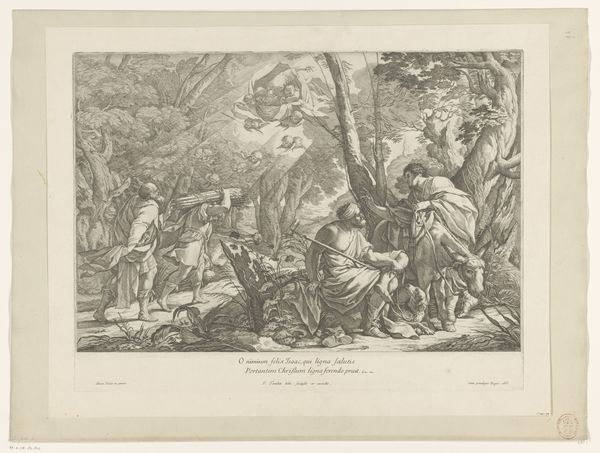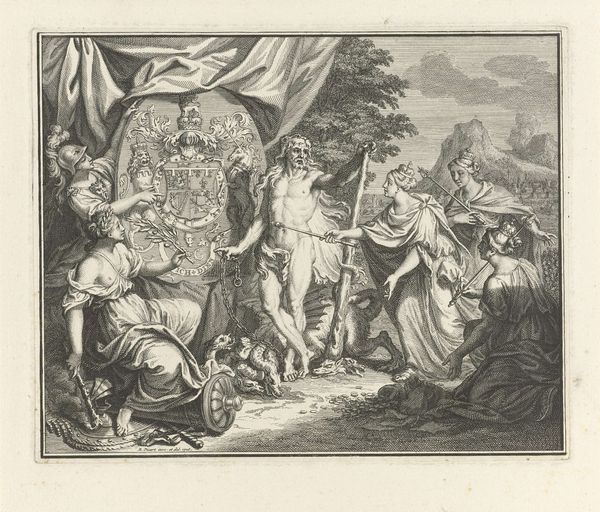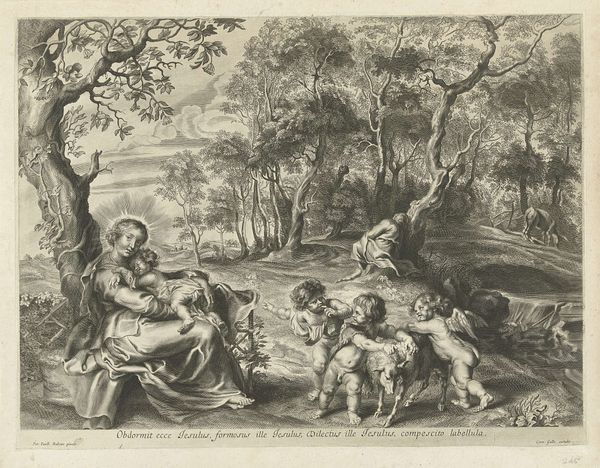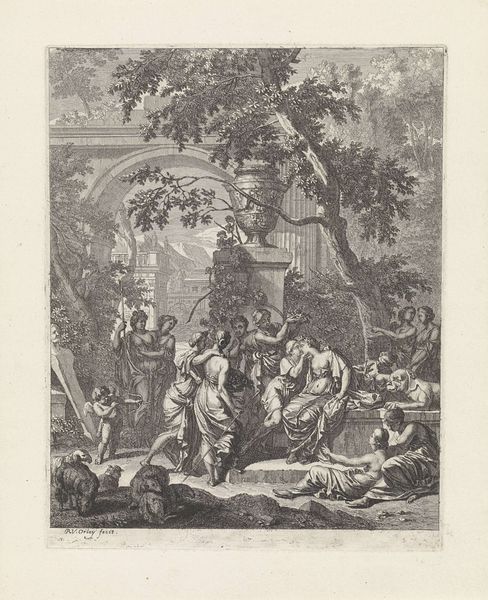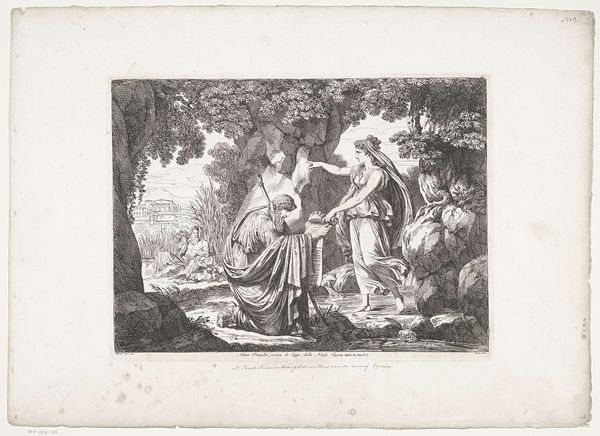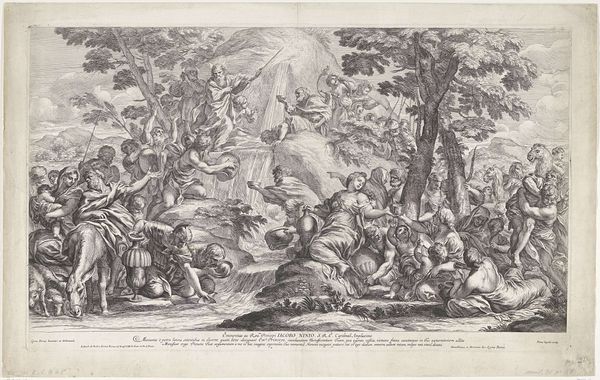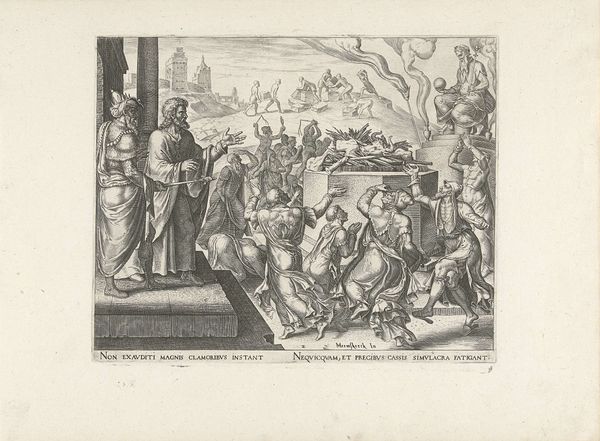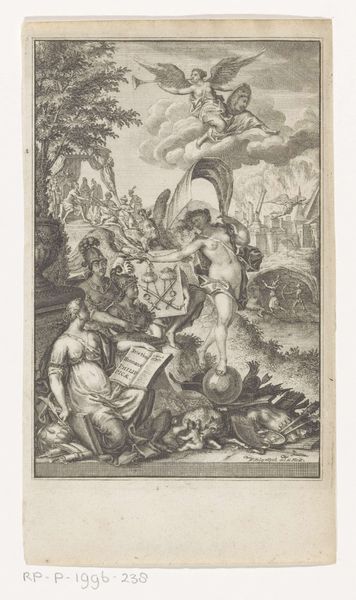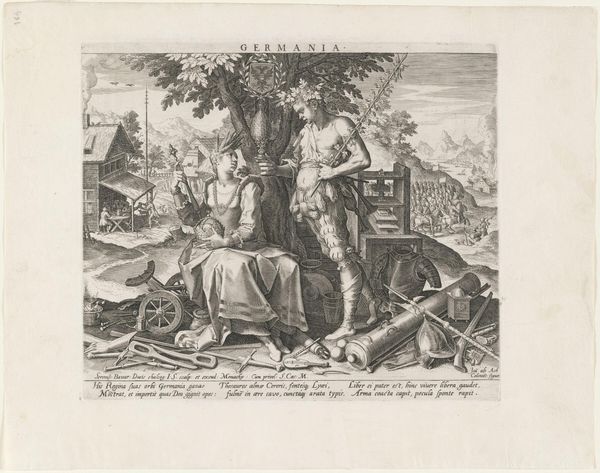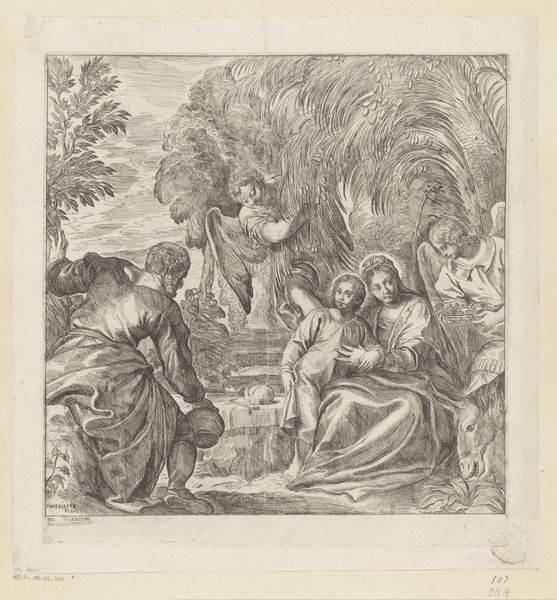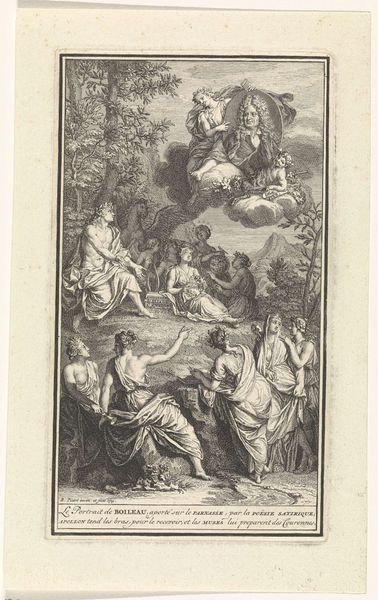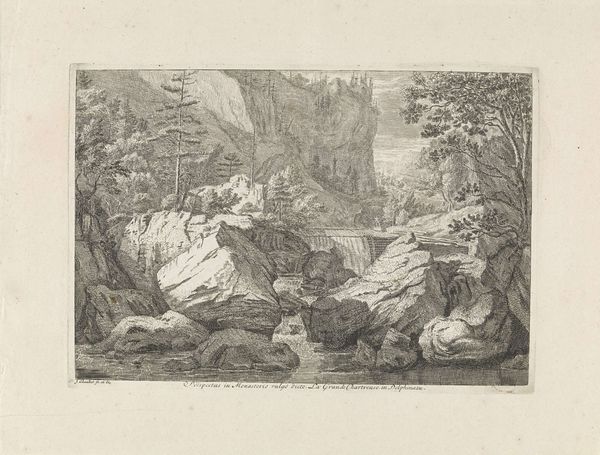
engraving
#
allegory
#
baroque
#
pen illustration
#
pen sketch
#
old engraving style
#
landscape
#
figuration
#
history-painting
#
engraving
Dimensions: height 273 mm, width 350 mm
Copyright: Rijks Museum: Open Domain
Curator: "Ontvoering van Europa," or "The Abduction of Europa," an engraving made in 1682 by Valentin Lefebvre. At first glance, a scene of chaos unfolds, dominated by a cluster of figures and a prominent bull. What strikes you about this composition? Editor: The busyness, definitely. And it’s all in monochrome, so it’s harder to visually separate. The figures are all clamoring around each other. What story is being told here? Curator: The story itself is deeply rooted in myth, but how does Lefebvre's rendition speak to the sociopolitical landscape of 17th-century Europe? Consider the act of "abduction" - isn't it a euphemism for colonial appropriation, for power imbalances enacted upon the vulnerable? Europa, after all, is not merely being "taken"; she's being violently displaced, her identity subsumed. How does this reframing resonate with contemporary discussions of migration, borders, and cultural imperialism? Editor: So, you are saying this is not simply a classical myth but reflects issues of power, displacement and a kind of early colonialism? I hadn’t thought about the myth as having any link to this era or to contemporary issues, only as a story from long ago. Curator: Precisely! The classical informs the contemporary. What do you make of Europa's central position, surrounded by these… attendants? Is she complicit? Or is this a dramatization of resistance? It is a charged narrative isn't it? Also consider the symbolism of the bull—its association with fertility, but also with untamed power, further complicating the gendered and political dynamics at play. Editor: It does, it adds layers. I thought it was a bull because Zeus transformed himself into one. But thinking about the other implications, the image raises a lot more questions. It feels less like a passive retelling of a myth and more like an active commentary. Curator: Yes, the engraving challenges us to examine these classical narratives critically and to recognize their potential to both reflect and perpetuate troubling social structures. Editor: Thank you. I appreciate how this context informs the way one can view the engraving today and what discussions it could initiate.
Comments
No comments
Be the first to comment and join the conversation on the ultimate creative platform.
